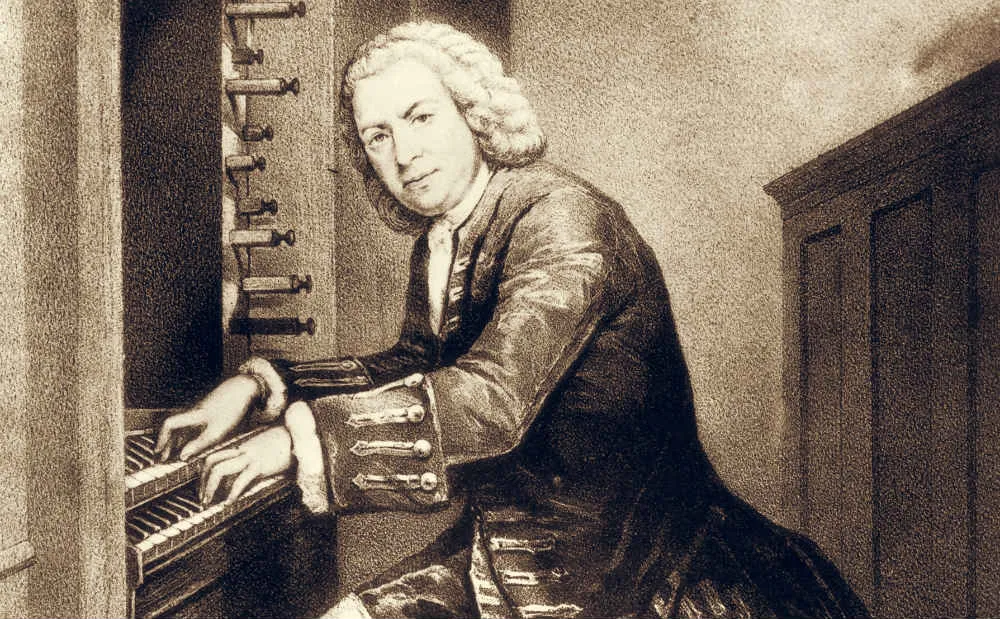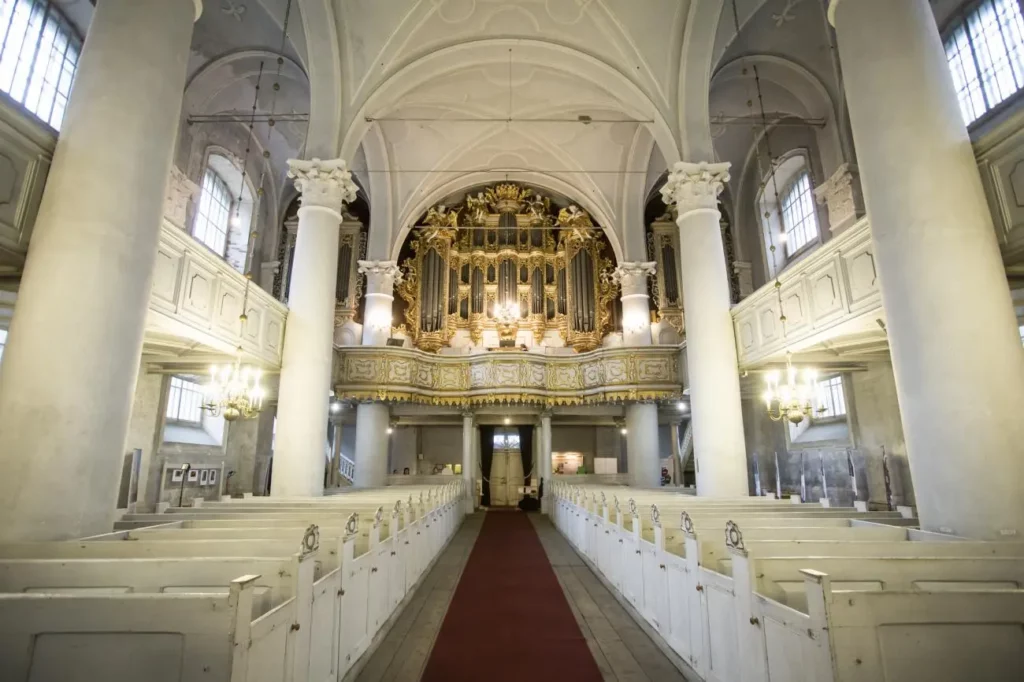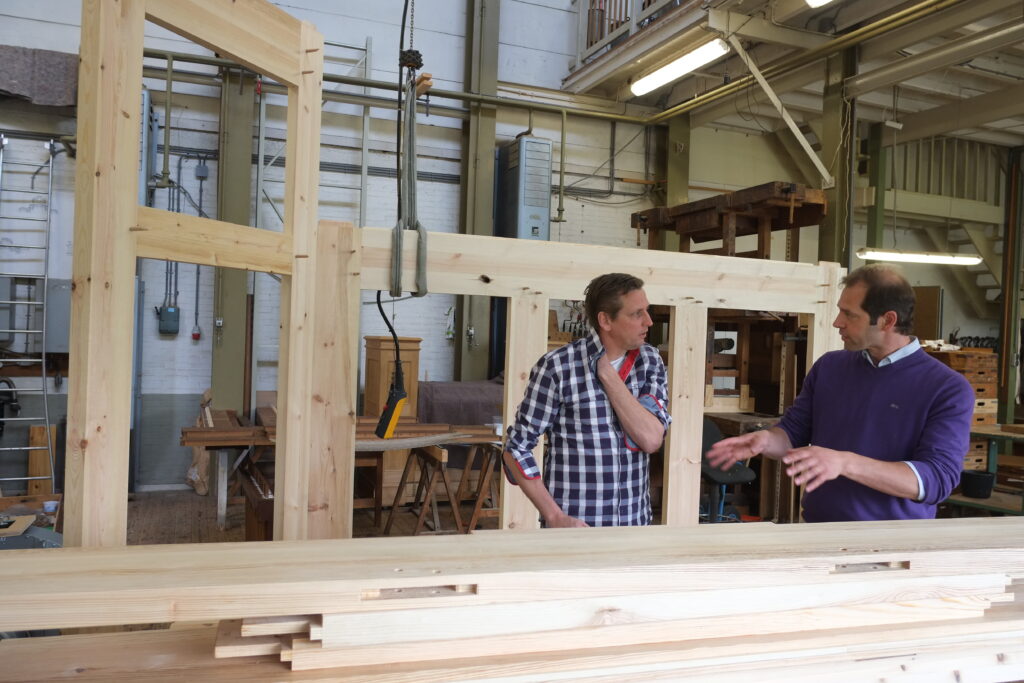Following the example of H.A. Contius
On the recommendation of internationally renowned organists at home and abroad, the organ was recreated after the example of an instrument by the important 18th-century organ builder Heinrich Andreas Contius.
H.A. Contius was close to the Bach family, and left for Riga in Latvia with a letter of recommendation from Johann Sebastian Bach, in which he is considered one of the very best organ building had to offer at the time.

Painting of Bach at the organ - painter unknown
A scientific project
The Leuven organ was built on the basis of an in-depth scientific and historical research, which was largely carried out on site, in Liepaja. The excellent relationship with the Renovation Fund of the Holy Trinity Church in Liepaja, the beautiful church that houses the original Contius organ, obviously played a crucial role in this. With their permission, the organ was examined in depth and described in great detail (construction, material, pipes, mechanics).
The entire research was shared with the enthusiastic group of young people, who gathered around this special church in Latvia, and thanks to this input were able to stimulate their environment for the preservation and restoration of this piece of High Baroque architecture.

Holy Trinity Church in Liepaja - © Latvia Travel
A Bach-organ in Leuven
The reconstruction was made with the same materials and techniques that Contius used. The first and part of the second phase of construction were carried out by Flentrop Orgelbouw BV from Zaandam and Joris Potvlieghe, organ and clavichord builder from Tollembeek, specialized in 18th century instruments. Joris Potvlieghe completed the second and third phases and intoned the organ completely in the style and tuning of the Liepaja organ.
After an idea of Sigiswald Kuijken, the seven-ton organ was erected on a fully wooden high hall specially designed by architect Jan Mannaerts, at historic height, on top of the new entrance. Thus, for the first time in our country, soloists, choir and orchestra will be able to make music around the organ.

Joris Potvlieghe in the organ - © Editiepajot
The missing link
The organ being built in Leuven is a reconstruction of the instrument that H.A. Contius himself built in 1774-1779 for the Holy Trinity Church in Liepaja (Latvia). This is done with materials and the techniques used by Contius, with the intention of reconstructing an instrument that was missing in our country and far beyond, significantly enriching the cultural heritage of Leuven and Belgium, but above all is the missing link for the study, training and the best possible performance of the music of the whole Bach family, and by extension baroque music.
In addition, the organ is the focal point of the International Contius Bach Festival, comprising daily concerts by highly renown performers and ensembles.
Simultaneously a summer academy for young musicians is taking place: in 2024 masterclasses are organised for organists or for organists and vocals, in cooperation with the Music Chapel Queen Elisabeth. The 10-day Festival is scheduled in the first half of July, the third edition running from 4 through 13 July 2024.

From the ashes...
The Leuven Contius organ is a symbol of the resurrection of Saint Michael’s church. It had always been a focus for music until it was devastated in 1944 by misguided allied bombing, which also destroyed the 1744 Le Picard organ.
The Flemish Administration gave permission for the new organ to be placed exactly where the original instrument had been positioned. This required the construction of a new wall-to-wall wooden organ gallery, allowing soloists, choir and orchestra to be grouped around the organ, as in former times.
